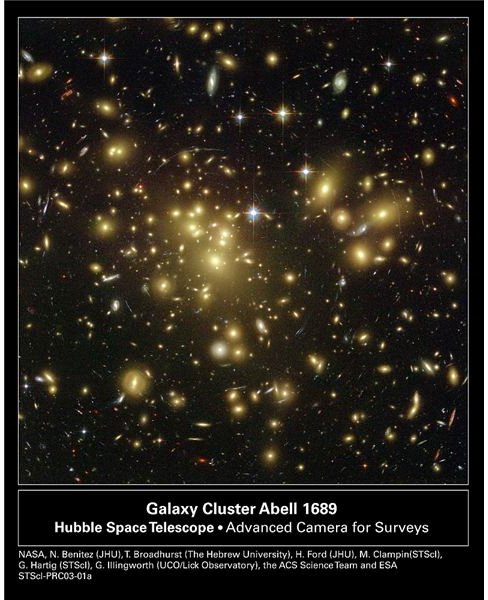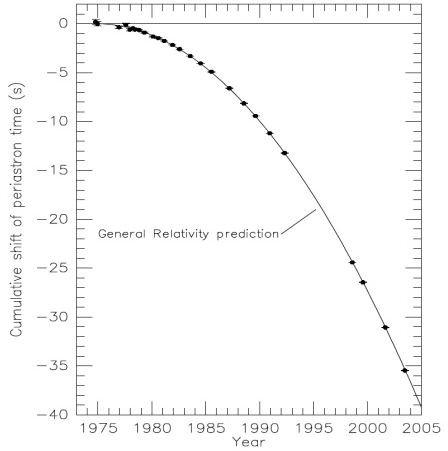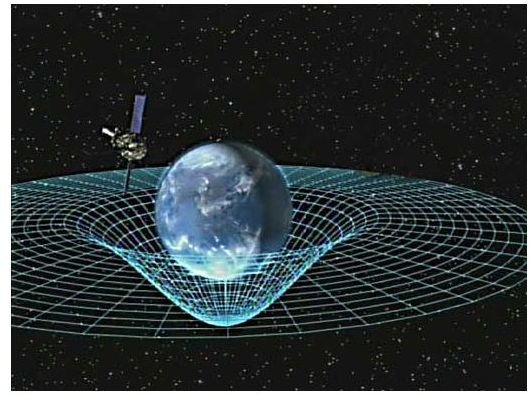The Nature of Gravity and Space
Gravity and Its Origins
According to the generally accepted theory of the big bang, all forces were united during the Planck epoch that extended from time t = 0 to t =
10-43 seconds. At the end of the Planck epoch, gravity split from the four fundamental forces leaving the strong and weak nuclear forces, and the electromagnetic force still united until 10-35 seconds. This period is known as the Unified epoch. Gravity spread throughout the universe as particles known as gravitons, which formed a cosmic background consisting of gravitational waves. These occurred so early in the big bang that they are redshifted beyond our ability to detect them today.
The Force of Gravity
Gravity is a force that we learn to cope with even before birth. It is always present and often ignored until we trip and fall, or an object slips from our hands and hits the floor. Astronauts do not feel the effects of gravity while in orbit, but it is there, too. They are in a state of constant free-fall as they orbit Earth, the same as when a parachutist jumps from an airplane and free-falls before opening their parachute. If you were to construct a platform that reached up to the attitude of the International Space Station (about 250 miles, or 402 km) and had the astronauts step on a scale, you would see that the astronaut’s weight would be about 87% of what it is on the Earth’s surface.
Gravity emanates from matter. If an object has mass, it has a gravitational field. Gravity propagates through the cosmos at the speed of light, and as Einstein showed in his Theory of General Relativity, it can bend light as it distorts the fabric of space. The force of gravity permeates all of space, as every object interacts with every other object by their intrinsic gravitational fields. This can be seen in Newton’s law of gravity:
F = GM1M2/R2
The formula shows that the gravitational force between two masses is equal to the product of the two masses divided by the square of the distance separating them times G—the Gravitational constant (G = 6.67 x 10-11 m3/kg-s2). So, while you sit comfortably at your desk, or on your favorite chair and read this article, you are being pulled and tugged by every object in the Universe…
Think about it. As Jupiter moves about the Sun, it is pulling on you with a force of about 3 x 10-8 N, or about 7 x 10-9 pounds-force (this value is for Jupiter at its closest to Earth). A small force, to be sure, but nevertheless it is there. The force between the Sun and a person with a mass of 80 kg is about 0.5 N (0.1 lbs). If we consider the force between our Sun and the most massive object in our galaxy, the black hole at the galactic core, we find the there is a force of almost 2 x 1016 N between them. This is for a black hole with an estimated mass of 4 million solar masses at a distance of 26,000 light-years! The black hole pulls on our test person with a force of 7 x 10-13 N.
These forces are ever-present, so when you consider the massive black hole at the center of any galaxy constantly tugging on everything in the galaxy, you can see that over time (and we’re talking billions of years here) it influences everything in the galaxy to some extent. The closer the object is to the black hole the stronger its influence. Galaxies pull on other galaxies as their gravitational forces reach across the vast intergalactic space and can form massive galactic clusters like the Abell 1689 cluster, which gravitationally distorts the space around it forming a gravitational lens.

Gravity and Space - The Search, The Theory, The Evidence
We see the affects of gravity all the time, but we have not been able to detect gravity waves or the corresponding particle, the graviton, despite our best efforts. Ongoing experiments with LIGO (Laser Interferometer Gravitational Wave Observatory) on Earth have not been successful in recording events such as collisions between binary neutron stars or black holes. A more sensitive system, LISA (Laser Interferometer Space Antenna), is being proposed, which will be a set of three satellites positioned in a triangle formation following 20 degrees behind Earth and tilted 60 degrees to the orbital plane. By using lasers to keep track of the distance between each satellite of the formation, astronomers hope LISA will have the sensitivity necessary to detect passing gravity waves. Being in space, LISA will also be free from the terrestrial vibrations like trucks passing by and natural vibrations in the Earth that affect the LIGO project, reducing its sensitivity.
Einstein’s General Theory of Relativity predicts that gravity waves exist. We have indirect evidence that they exist by monitoring a binary system—PSR B1913+16—consisting of pulsars that are rapidly orbiting each other. Since its initial discovery in 1974 it has been determined that the orbit between the two neutron stars is decaying, and they are gradually falling into each other. The period of the radio beacon we detect from this system as the two stars orbit about each other is getting shorter, and it is now almost 40 seconds shorter than it was when the system was first discovered. (See figure below.) According to Einstein’s theory, the energy dissipated by this binary system will be in the form of gravity waves, and the observational data matches the theoretical data with a very high degree of precision.

Gravity—it’s out there, elusive but constant and flowing through the fabric of space. (Maybe this is the “Force” the Jedi warriors used!)
References
Hawley, John F. and Katherine A. Holcomb, Foundations of Modern Cosmology, Great Britain, OXFORD University Press, 2005, pg 239.
Image of Pulsar Period Change: [Source: J.M. Weisberg, J.H. Taylor: Relativistic Binary Pulsar B1913+16: Thirty Years of Observations and Analysis, arXiv: astro-ph/0407149v1 Figure 1.] (https://arxiv.org/abs/astro-ph/0407149)
